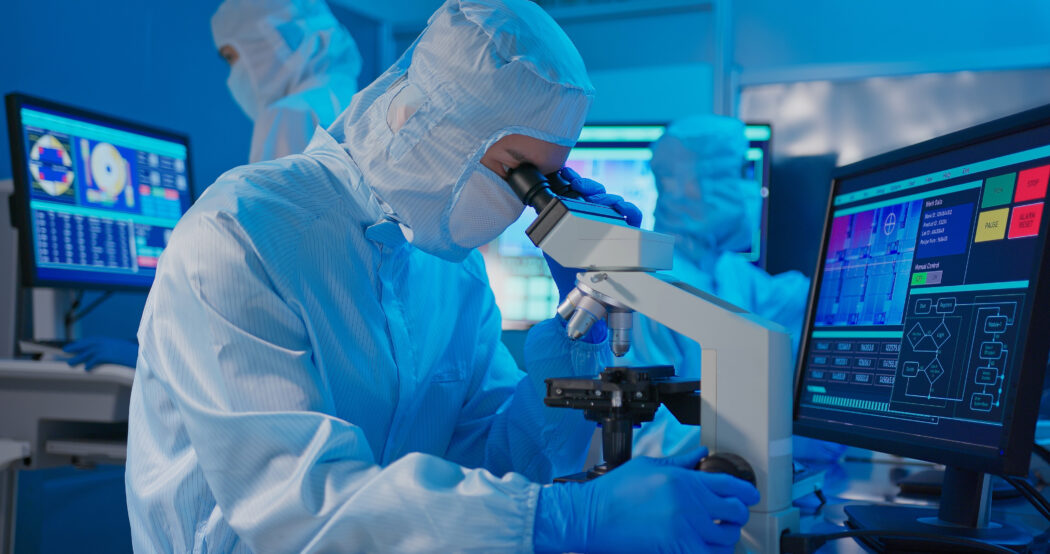How The Strong Inventory Relates to a Career as a Biostatistician
The Strong Interest Inventory is a career assessment tool that can help people identify their interests and potential career paths. It consists of a series of questions that assess an individual’s interests and work-related values and provides a report that identifies potential career matches. Biostatisticians are professionals who use statistical methods to design studies, analyze data, and interpret results in the field of biology and healthcare. Biostatisticians are individuals who utilize statistical methods to analyze biological data and support research in various fields such as medicine, public health, and the life sciences. Their work is aligned with the Conventional Theme Code in the Strong Interest Inventory Assessment, as it involves organizing and analyzing data in a systematic and precise manner. Biostatisticians help design studies, collect and analyze data, and interpret results in order to support decision-making and solve complex problems in the field of biology. They also play a crucial role in ensuring the validity and accuracy of the results obtained from various studies and experiments.

Read about a career as a biostatistician, including information such as biostatistician salary, daily tasks, required education, and other career information.
What Does a Biostatistician Do?
Biostatisticians are professionals who use statistical methods to design studies, analyze data, and interpret results in the field of biology and healthcare. Their work is important for designing and implementing research studies, clinical trials, and public health programs. Biostatisticians help design research studies, clinical trials, and public health programs. They help determine the appropriate sample size, choose the appropriate statistical methods, and develop protocols for data collection and analysis. Biostatisticians analyze data collected from research studies, clinical trials, and public health programs. They use statistical methods to identify patterns, relationships, and trends in the data. They also interpret the results of data analysis and draw conclusions from the findings.
A Biostatistician Scientist’s Day-to Day Tasks and Tools
Their day-to-day responsibilities include designing and conducting studies, collecting, and analyzing data, and interpreting results to support evidence-based decision-making in health research. They work closely with researchers and other medical professionals, such as epidemiologists and clinicians, to ensure that studies are well-designed, and that data is properly analyzed. Biostatisticians may also be responsible for communicating results to various stakeholders, including researchers, funding agencies, and the public, and for providing expert advice on study design and data analysis to support research efforts.
As stated by The Dept’ of Labor, The Following Work Tasks are Most Often Completed by Biostatistician Scientists:
- Analyze data to identify trends or relationships among variables.
- Analyze health-related data.
- Prepare analytical reports.
- Present research results to others.
- Determine appropriate methods for data analysis.
- Design research studies to obtain scientific information.
- Prepare graphics or other visual representations of information.
- Update knowledge about emerging industry or technology trends.
- Develop scientific or mathematical models.
- Monitor operational activities to ensure compliance with regulations or standard operating procedures.
(Retrieved from O’netOnline.org. Biostatisticians Career. Career Code: 15-2041.01 Detailed Work Activities)
Core Activities for Biostatisticians:
- Draw conclusions or make predictions based on data summaries or statistical analyses.
- Analyze clinical or survey data using statistical approaches such as longitudinal analysis, mixed-effect modeling, logistic regression analyses, and model-building techniques.
- Write detailed analysis plans and descriptions of analyses and findings for research protocols or reports.
- Calculate sample size requirements for clinical studies.
- Read current literature, attend meetings or conferences, and talk with colleagues to keep abreast of methodological or conceptual developments in fields such as biostatistics, pharmacology, life sciences, and social sciences.
- Design research studies in collaboration with physicians, life scientists, or other professionals.
- Prepare tables and graphs to present clinical data or results.
- Write program code to analyze data with statistical analysis software.
- Provide biostatistical consultation to clients or colleagues.
- Review clinical or other medical research protocols and recommend appropriate statistical analyses.
(Retrieved from O’netOnline.org. Biostatisticians Career. Career Code: 15-2041.01 Tasks- Category-Core)
Biostatisticians work with a litany of tools and technologies in order to collect, analyze, and interpret data related to health and medical research. They use specialized software programs and database management systems to manage large amounts of data and perform complex statistical analyses. They may also use visualization tools to help communicate their results to others in a clear and understandable manner. Additionally, they may use programming languages such as R or SAS to develop custom scripts and algorithms for data analysis and modeling. Biostatisticians utilize the following technology and software:
- IBM SPSS Statistics
- Oracle Java
- SAS
- The MathWorks MATLAB
- Structured query language SQL
- SAP software
Experience and Education
Biostatisticians typically requires a strong educational background in statistics and mathematics, as well as experience and expertise in the biological or health sciences. A master’s degree or Ph.D. in biostatistics or a related field is often the minimum requirement for employment in this field. In addition to formal education, biostatisticians typically receive on-the-job training in the specific techniques, tools, and software they use in their day-to-day work. This may include learning the aforementioned programming languages, R or SAS, as well as mastering specialized statistical software packages and databases. Biostatisticians may also participate in workshops, conferences, and continuing education programs to keep up with the latest developments in their field. To increase their chances of success in this competitive field, biostatisticians should have excellent problem-solving skills, strong analytical abilities, and the ability to communicate complex technical information in clear, concise language.
Salary and wages
On average, biostatisticians can expect to earn an annual salary of around $80,000 to $120,000, with the higher end of the range being earned by those with advanced degrees and extensive experience. To increase their salary, biostatisticians can pursue advanced degrees, such as a master’s or Ph.D. in biostatistics, gain experience by working on complex projects, and expand their skill set by learning new methods and technologies.
Biostatisticians have a wide range of specializations to choose from, depending on their interests and career goals. Those who specialize in the pharmaceutical industry, particularly in the development of new drugs, are often the most highly paid within the field. Other lucrative specialties include consulting, where biostatisticians may work for consulting firms or act as independent consultants, and health informatics, which involves using data and technology to improve healthcare.
Below are some employment trends for Biostatisticians:
- Median Salary: $45.95 hourly, $95,570 annually
- Employment: 34,200 employees
- Projected growth (2021-2031): Much faster than average (11% or higher)
- Projected job openings (2021-2031): 3,900
Visit Our Validity and Reliability Factual Strong Interest Inventory® Page
Visit Our Myers-Briggs Type Indicator® Career Resource Database for Information on MBTI® Personality Type Careers
To Learn More About the Myers-Briggs Type Indicator, visit our About MBTI Test Page
Assessment Categories
References
- Bureau of Labor Statistics wage data and 2018-2028 employment projections Onetonline.org









